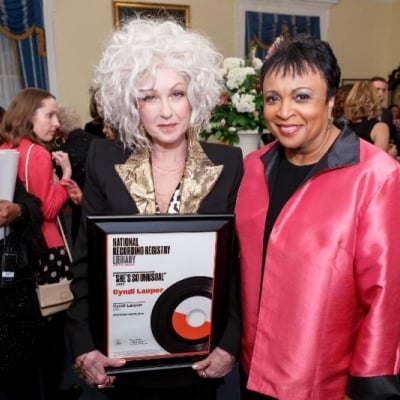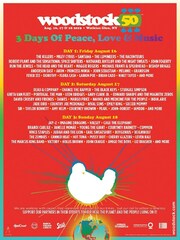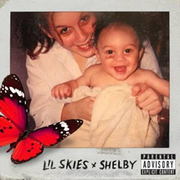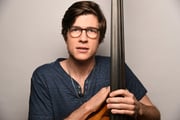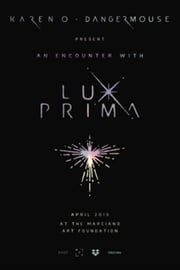New York, NY (Top40 Charts) The classic radio western "Gunsmoke";
Ritchie Valens' groundbreaking 1958 sensation "
La Bamba"; Sam & Dave's 1967 hit single "
Soul Man"; the revolutionary 1968 Broadway musical "Hair"; and Neil Diamond's 1969 "Sweet Caroline," which became a popular sports anthem, are the newest recordings inducted into the
National Recording Registry of the Library of Congress. Librarian of Congress Carla Hayden today named these and 20 other recordings as aural treasures worthy of preservation because of their cultural, historic and aesthetic importance to the nation's recorded sound heritage.
"The
National Recording Registry honors the music that enriches our souls, the voices that tell our stories and the sounds that mirror our lives" said Hayden. "The influence of recorded sound over its nearly 160-year history has been profound and technology has increased its reach and significance exponentially. The Library of Congress and its many collaborators are working to preserve these sounds and moments in time, which reflect our past, present and future."
Under the terms of the
National Recording Preservation Act of 2000, the Librarian, with advice from the Library's
National Recording Preservation Board (NRPB), is tasked with annually selecting 25 titles that are "culturally, historically, or aesthetically significant," and are at least 10 years old. More information on the
National Recording Registry can be found at www.loc.gov/programs/national-recordingpreservation-board/about-this-program/
The new recordings to the
National Recording Registry bring the total number of titles on the registry to 525, a small part of the Library's vast recorded-sound collection of nearly 3 million items.
The sound recordings recently named to the registry showcase works across multiple genres, including blues, children's recordings, classical, comedy, country, radio, jazz, pop, hip-hop, rhythm and blues, Latin and Broadway. The spoken-word and musical recordings span a century from 1901 to 2001. The oldest recorded sounds on the 2018 registry are 20 cylinders of the earliest-known recordings of Yiddish songs (1901-1905) and the most contemporary recording is hip-hop mogul Jay-Z's 2001 album "The Blueprint," which solidified his reputation as one of the greatest rappers in music.
Among the selections are the Victor Military Band's 1914 rendition of "
Memphis Blues"; Cab Calloway's signature song "Minnie the Moocher," released in 1931;
Benjamin Britten's 1953 album "War Requiem"; Lefty Frizzell's crossover 1959 single "Long
Black Veil"; folk singer Ola Belle Reed's self-titled album, released in 1973; the popular educational children's program "Schoolhouse Rock!"; Sylvester's 1978 disco single, "You Make Me Feel (Mighty Real)"; and Earth, Wind & Fire's 1978 song "September."
Cyndi Lauper's celebrated 1983 debut solo album "She's So Unusual" also made the list. "I'm really honored that 'She's So Unusual' is being recognized as being one of the nation's audio treasures worthy of lifetime preservation," said Lauper. "I was really determined to make a cohesive collection of songs and really determined to make sure all types of women were represented in the 'Girls…' video. I had this very strong vision of how I wanted to put the music together. If this is going to be my thing, and if this is the only time I ever get to open my mouth and sing, I want it to be great."
Several recordings on the list reflect the diverse sounds of the nation's audio heritage. Chicano culture was recognized in the selection of
Ritchie Valens' timeless, groundbreaking song, "La Bamba." Los Lobos released its version of the song in 1987. "As a young boy growing up in East Los Angeles, I was curious and ultimately impressed by a rock song sung in Spanish — that song was 'La Bamba' by
Ritchie Valens," said Louie Pérez, one of the founding members and guitarist for Los Lobos. "It continues to be a hallmark in American music and an influence on all
Latino music that followed."
The
Detroit riot of 1967 was the impetus for Sam & Dave's iconic single "Soul Man." "When I recorded 'Soul Man,' I had no idea it would become an anthem and such a significant part of American culture," said Moore, who was the other half of the duo with Dave Prater. "I've learned that when I first sang 'Soul Man,' it was the first time that those words had ever been used together in the English language, to which I can only say 'wow'!"
Other culturally significant recordings include Nina Simone's 1964 single "Mississippi Goddam" — a response to the murders of civil rights activist Medgar Evers in Mississippi and the bombing death of four little girls at a church in
Alabama — and the Melville Jacobs collection of recordings (1929-1939) of Native Americans from the northwestern region of the country that documented 23 different separate tribal languages.
Also on the list is Curtis Mayfield's 1972 soundtrack for "Superfly," the film by the same name that was a huge commercial success. "I would compare Curtis Mayfield's work on 'Superfly' to the work of the great post-Impressionist painters," said musician and record executive Don Was. "Mayfield took textures that were then popular in rhythm and blues — like wah-wah guitars, congas, flutes, orchestras — and blended them into something altogether new. … I think it's wonderful that 50 years after its inception, the music of 'Superfly' still resonates with listeners and is being honored by the
National Recording Registry."
The legendary saxophonist
Dexter Gordon's "GO" is the newest jazz recording to join the registry. "When
Dexter Gordon recorded the album 'GO' on Blue Note Records in 1962, he had no idea that it would become the classic jazz album it became," said Gordon's wife Maxine. "He loved the album because of the musicians
Sonny Clark,
Butch Warren, and Billy Higgins who, as he said, 'played as one sound.' I know
Dexter would be honored and delighted with this honor."
In addition to the western radio drama "Gunsmoke," which aired on CBS for nine years and was subsequently turned into a television series, spoken-word recordings on the list also include Stan Freberg's 1961 comedy album and monologues by the noted dramatist Ruth Draper from 1954-1956. Robert F. Kennedy's extemporaneous speech immediately following
Martin Luther King Jr.'s assassination in 1968 — two months before Kennedy was also killed by an assassin's bullet — was also named to the registry.
Pablo Casals' 1939 reimagining of the Bach cello suites was selected in the classical category. Raphaël Merlin, cellist of the acclaimed Ébène Quartet, said: "There is a prophetic aspect to
Pablo Casals's work - he revealed his recording of the six Bach Cello Suites, and they instantly became our bible, and continue to offer revelations to cellists even to this day. At the same time, he also made a practical case for these works as an ideal way for a musician to exercise his or her mind, cultivate healthy playing technique, study counterpoint, and more. However you look at them, his recording of the suites still sounds like the opening of a new era."
Some registry titles have already been preserved by the copyright holders, the artists or other archives. In cases where a selected title has not already been preserved, the Library of Congress Packard Campus for Audio Visual Conservation works to ensure that the sound recording will be preserved by some entity and available for future generations. This can be either through the Library's recorded-sound preservation program or through collaborative ventures with other archives, recording studios and independent producers.
The Packard Campus is a state-of-the art facility where the nation's library acquires, preserves and provides access to the world's largest and most comprehensive collection of films, television programs, radio broadcasts and sound recordings (www.loc.gov/avconservation/). It is home to more than 7 million collection items.
The Library of Congress is the world's largest library, offering access to the creative record of the United States — and extensive materials from around the world — both on-site and online. It is the main research arm of the U.S. Congress and the home of the U.S. Copyright Office. Explore collections, reference services and other programs and plan a visit at loc.gov; access the official site for U.S. federal legislative information at congress.gov; and register creative works of authorship at copyright.gov.
2018
National Recording Registry
Yiddish Cylinders from the Standard Phonograph Company of New York and the
Thomas Lambert Company (c. 1901-1905)
These cylinders originally produced by the Standard Phonograph Company of New York are believed to be the earliest recordings of Yiddish songs. Eventually released by the
Thomas Lambert Company of Chicago, the cylinders (some manufactured in unusually vibrant colors) also represent the first releases by an ethnically owned and focused record company, a risky venture at a time when a U.S.-based audience for foreign-language music had yet to be established. These surviving 20 cylinders, out of the 48 originally produced, provide insight into the Yiddish-speaking community of the era and into the difficult assimilation of Jewish immigrants arriving to
America at the turn of the century.
"
Memphis Blues" (single), Victor Military Band (1914)
Though he would eventually be acclaimed as "The Father of the Blues," W.C. Handy was only a moderately successful bandleader in 1912 when he published "The
Memphis Blues" in sheet music form. It caught on quickly and was soon being performed by bands around the country, introducing Handy's style of 12-bar blues to a wide audience. With the help of bandleader
James Reese Europe, the dancers Vernon and Irene Castle used it to promote their version of the emerging popular dance, the foxtrot. No recording of the music was made, however, until July 15, 1914, when the Victor Military Band cut its hit version, helping to pave the way for the jazz and blues craze that would sweep the country within a few years. "
Memphis Blues" was soon standard repertoire and was re-recorded as late as 1942 by swing era bandleader Harry James.
Melville Jacobs Collection of Native Americans of the American Northwest (1929-1939) Melville Jacobs (1902-1971) was an anthropologist and linguist whose research and field recordings have made a crucial contribution to the preservation of Native American languages of the northwestern region of the country, including Athabascan, Chinook, Coos, Kalapuya, Lummi, Lushootseed, Sahaptin, Tillamook, Tlingit and Tsimshian. In all, Jacobs made nearly 170 recordings (on both cylinder and disc), in 23 separate languages, documenting some of the final speakers of many of these dialects. However, since their creation, Jacobs' recordings have not languished in the archives as examples of forgotten traditions.
Various tribes have taken a keen interest in this documentation of language, stories, music and culture. In the case of the Miluk language, the recordings have even been utilized in classes attempting to revive this vanishing tongue.
"Minnie the Moocher" (single), Cab Calloway (1931)
By 1931, songs about dens of iniquity were nothing new, but one so deliberate, not to mention as entertaining, as Cab Calloway's "Minnie the Moocher" was indeed remarkable. "Minnie" bears more than a slight resemblance to a 1920s ditty titled "Willie the Weeper," a song about a "chimney sweeper" with a drug addiction. In the song, Minnie is characterized as both "rough and tough" and big-hearted, and one who associated with types as disparate as "Cokey Joe" and the King of Sweden. An equally unlikely pairing was the wild abandon, yet perfect control, with which Cab Calloway sang this minor-keyed fable. Calloway sang "Minnie" throughout his long career, including the rousing version he performed in the 1980 film "The Blues Brothers," when he was an agile septuagenarian.
"Bach Six Cello Suites" (album),
Pablo Casals (c. 1939)
Casals' role in rediscovering the Bach cello suites has tended to be somewhat overstated, in a way that both exaggerates and denigrates his real accomplishment. The cello suites were fairly well-known among cellists and composers during the 19th century. Where Casals differed from his predecessors was in understanding and cultivating the musical nature of the suites themselves. He seemed to grasp intuitively the intense depth of the music and gives it the study that it demanded. Although his approach to the music appears quite romantic, his realization of the value of the music for concert performance (in contradiction to hundreds of years of tradition among cellists) was a profoundly modern gesture and one that helped change the reputation of the cello and modified not just cello performance but the nature of string playing generally.
"They Look Like Men of War" (single), Deep River Boys (1941)
When they recorded "They Look Like Men of War" on a 1941 Lang-Worth transcription disc, made for radio stations but not sold in stores, the Deep River Boys were singing an old hymn with a rich history at the all-black college, Hampton
Institute in Virginia, where they had met as students in 1933. The song had been part of the musical life at Hampton since the school's founding in the late 1860s, and was much beloved by the school's first president, General Samuel C. Armstong, who first heard it sung by black troops under his command during the Civil War. Armstrong said, "…late one evening I was startled by a magnificent chorus from nearly a thousand black Union soldiers, which called me from my tent to listen [to] its most inspiring strains, and I caught the words of what I called the 'Negro
Battle Hymn' - 'They Look Like Men of War.'"
"Gunsmoke" — Episode: "The Cabin" (Dec. 27, 1952)
Due to the arrival of television, radio drama was on the endangered list by early 1952, but CBS president
William Paley was still eager to take a chance with an idea for a hardboiled, adult-oriented western he'd been nursing for several years. Writers John Meston and Norman MacDonald gave him "Gunsmoke," a weekly half hour featuring Marshall Matt Dillon, a dedicated lawman who often found himself embroiled in complex moral dilemmas in the violent, frontier town of Dodge City, where he fought stagecoach robbers and cattle rustlers, but also dealt with domestic violence and discrimination. Radio's "Gunsmoke" was a hit, probably the last new radio drama to make an impact. It ran for nine seasons on the radio and during that time the legendary "Gunsmoke" TV series was launched. In the episode "The Cabin," Matt Dillon, played by
William Conrad, near death in a blizzard, seeks shelter in a cabin where two psychotic outlaws are holding a young woman hostage. Like many "Gunsmoke" radio episodes, this episode was later adapted for the television series.
Ruth Draper: Complete recorded monologues, Ruth Draper (1954-1956)
Ruth Draper (1884-1956) was an actress who specialized in solo performances featuring numerous characters and monologues of her own creation. Some were humorous, such as her many sketches of society women like "The Italian Lesson," a 28- minute tour de force of conversation, interruptions and distractions, and very little Italian.
Others were more serious, like "A Scottish Immigrant at Ellis Island" and "In a Railway Station on the Western Plains." She presented them successfully on stages in
Europe and
America for decades, starting in the 1910s. She was a great favorite of actors, playwrights and directors. Her early fans included the novelist Henry
James and she was an acknowledged influence on Lily Tomlin, Mike Nichols,
Julie Harris, Uta Hagen,
David Mamet, Julia Sweeney and many others. She resisted recording offers until late in her life, when she recorded a series of her monologues in 1954. A lone album with three monologues was released by RCA Victor in 1956, though her work was further anthologized on five albums by the
Spoken Arts label. Recent digital versions have included previously unreleased monologues.
"
La Bamba" (single),
Ritchie Valens (1958)
Ritchie Valens was born Richard Valenzuela in Los Angeles in 1941. English was his first language and, though he never mastered Spanish, he learned Spanish songs from his Mexican-American family, including "La Bamba," a song from Vera Cruz that was a favorite dance piece at weddings. Valens' amplified guitar and power chords were a long way from the acoustic string band sounds of Mexico, but he successfully transposed the feeling and rhythm of the song to the back beat of early rock and roll. It was released as the b-side of his second single "
Donna" in late 1958, and had become a hit on its own when he died on Feb. 3, 1959, in a plane crash that also took the lives of
Buddy Holly and J.P. Richardson, "The Big Bopper." In spite of his brief life, Valens' success brought a new sound to the mainstream and inspired generations of Chicano musicians.
"Long
Black Veil" (single), Lefty Frizzell (1959)
Lefty Frizzell was a hard-drinking, hard-living country singer who helped broaden the appeal of honky-tonk music with a string of hits in the early 1950s. In songs such as "If You've Got the Money," Frizzell smoothed out the vocals of honky-tonk while still retaining their vitality. His hits had dried up by the late '50s, so Frizzell decided to work with a different music publishing company, Cedarwood. In the spring of 1959, on the same day
Danny Dill and Marijohn Wilkin finished "Long
Black Veil," Wilkin pitched it to Frizzell and legendary producer Don Law. Frizzell wanted to record it immediately even though it was a departure from his style, more folk song than honky-tonk. In "Long
Black Veil," a ghostly saga song, Frizzell portrays a dead man who tells the tragic secret of his execution and about the woman who mourns for him. The recording session included the composer (Wilkin) on piano and the plaintive steel guitar of Don Helms echoing the wails in the lyrics. "Long
Black Veil" was not only Frizzell's biggest hit in years, it became one of his signature songs and a genre-crossing classic, covered by Johnny Cash, Sammi Smith, The Kingston Trio, Joan Baez, The Band, The
Chieftains and dozens more.
"Stan Freberg Presents the United States of America, Vol. 1: The Early Years" (album), Stan Freberg (1961)
Rumble, rumble, rumble … "Why does history have to be so incredibly boring?" Stan Freberg asked. The subject he failed in high school became a most enviable satirical target in this 1961 album. A uniquely American collection of off-the-wall historical anachronisms, clever puns and wacky tunes, Freberg was first a skilled radio hit-maker, but also an actor and real-life "Mad Man," credited with bringing polished humor to the world of advertising. Whether he was selling prunes ("today the pits, tomorrow the wrinkles") or skewering American history, Freberg's limber vocal impressions were aided and abetted by notable actors such as Paul Frees, June Foray,
Jesse White and others. "United States of America, Vol. 1" tweaks the early years from
Christopher Columbus (singing petulantly of a "Round,
Round World") through
George Washington's victory at Yorktown (a victory due to sound-effect trickery). In Freberg's universe, absurdity abounds: Betsy Ross does alterations, Washington bargains for boats on the Delaware, and a hep-cat revolutionary war drummer has some complaints about the Yankee Doodle fife-man ("I got a bandage around my ears, but it doesn't help much."). Slyly subversive, this album has an enduring comic effect that presages Mel Brooks' "History of the World" and groups such as Firesign Theatre. It nearly became a
David Merrick musical, but instead Freberg released "Volume 2" 35 years later, using many of the same cast … Mutiny, mutiny, mutiny.
"GO" (album),
Dexter Gordon (1962)
Legendary jazz saxophonist
Dexter Gordon was tall and elegant. Nicknamed "Long Tall Dexter,"
Gordon had been very active in the 1940s, but due to drug addiction and incarceration, he practically disappeared in the '50s. In August 1961, he was finally clean and free. "GO" was not merely Gordon's return to form, but a brilliant display of his hard-won maturity. His tenor sax solos are often playful, even mischievous, sprinkled with quotes from music as diverse as "Take Me Out to the Ball Game" in "Three O'Clock in the Morning" or "El Jarabe Tapatio" ("Mexican Hat Dance") in "Love for Sale." On the other hand,
Gordon is known for his sensuous ballads, such as his tender treatment of "I Guess I'll Hang My
Tears Out to Dry." Lester Young was one of Gordon's main influences and "Cheese Cake" is inspired by "Tickle Toe," composed by Young and recorded by Count Basie and his Orchestra in 1940 with Young playing tenor. All six tracks were recorded on Aug. 27, 1961 and feature Blue Note regulars pianist
Sonny Clark, bassist
Butch Warren and drummer Billy Higgins, a trio which
Gordon called a perfect rhythm section.
Gordon is quoted as saying that "GO" is his favorite album.
"War Requiem" (album),
Benjamin Britten (1963)
Benjamin Britten's "War Requiem" was commissioned for the 1962 consecration of the new Coventry Cathedral, after the original 14th-century building was destroyed during World War II. The ambitious work combined text and elements from the traditional Latin Mass for the Dead with nine poems written by Wilfred Owen, a World War I soldier who died seven days before the Armistice. The Decca label had intended to record the "War Requiem" premiere at Coventry Cathedral, but there were numerous issues with the production that instead led producer John Culshaw to consider a studio recording under more ideal conditions. Britten himself didn't regard any of his recordings as definitive, but because of having his choice of singers, conducting the work himself and having great recording quality — even by Decca standards — it has been the benchmark for every other recording or performance of the "War Requiem." The recording sales exceeded all expectations, in
Europe and globally. Decca then had the confidence to record his operas and Britten's reputation as a great composer was fully acknowledged.
"Mississippi Goddam" (single),
Nina Simone (1964)
Written by
Nina Simone in response to the murder of civil rights activist Medgar Evers in Mississippi and the bombing of the Sixteenth Street Baptist Church in Birmingham, Alabama, which killed four young African-American girls, "Mississippi Goddam" is one of the most vital songs to emerge from the Civil Rights era. Though surprisingly upbeat in tempo (Simone said of it, "This is a show tune, but the show hasn't been written for it yet"), the message of "Mississippi" is brutally clear and addressed racial strife in music without the safety of abstraction and metaphor.
Simone often said when introducing the song in concert, "And I mean every word!" Simone's lyrics and impassioned vocal performance lays out her outrage and though the curse word in its title immediately limited the recording's radio airplay, the meaning and musicianship of this work has ensured its fame and endurance.
"
Soul Man" (single), Sam & Dave (1967)
Sam & Dave's biggest hit was inspired by a riot. After watching coverage of the 1967
Detroit riot, songwriters Isaac Hayes and
David Porter were determined to respond with a positive song. Hayes said, "... the word 'soul,' it was a galvanizing kind of thing for African-Americans, and it had an effect of unity, it was said with a lot of pride." The result was "Soul Man," a danceable declaration of
Black Pride. The dynamic vocal duo of Sam & Dave (Sam Moore and
David Prater) were chosen to record it with Hayes and Porter producing and backed by Stax Records regulars Booker T. and the M.G.'s and the Mar-Keys' horns. "
Soul Man" is instantly recognizable by its first few notes, guitarist Steve Cropper's trademark sliding sixths. The engine that powers "
Soul Man" is Donald "Duck" Dunn's infectious, ebullient bassline.
"Hair" (original Broadway cast recording) (1968)
"Hair," the self-proclaimed "Tribal Love-Rock Musical," was essentially sex, drugs and rock 'n' roll in a Broadway show, with the Vietnam War and racial prejudice thrown in for good measure. Given the cultural division of 1968, depending upon which side of the divide one was on, it was, surprisingly or naturally, a hit, running for 1,750 performances. The book and lyrics were written by
James Rado and Gerome Ragni, who appeared in the Broadway cast as
Claude and Berger, respectively. Galt MacDermot composed the music. Even leaving politics aside, the Broadway show received some criticism despite its considerable success, such as the complaint that it didn't have much of a plot or that it was more of a revue than a musical. However, such criticisms are less pertinent to a cast album and they ignore the fact that the songs from "Hair" are extremely catchy. The musical's original Broadway cast recording was enormously successful. During 1969, The 5th Dimension ("Aquarius/Let the
Sunshine In"); The Cowsills ("Hair"); Three Dog Night ("Easy to Be Hard") and
Oliver ("Good Morning Starshine") all had major hits with covers of songs from the show. The original LP release omitted a few songs, which were later restored on the CD reissue.
Speech on the Death of Dr.
Martin Luther King, Jr., Robert F. Kennedy (April 4, 1968)
On the night of April 4, 1968, Sen. Robert F. Kennedy flew to Indianapolis to speak at a rally in a mostly African-American neighborhood of the city in support of his campaign for the presidency. The news of
Martin Luther King, Jr.'s death in
Memphis reached Kennedy when he landed, but much of the assembled crowd only knew that King had been shot. After sharing the devastating news, Kennedy spoke extemporaneously from brief notes. He called for peace in the face of pain and rage and drew upon his experience of the assassination of his brother five years earlier. The recording of the speech captures the tone and emotion of his delivery and the expressions of the crowd — their dismay at the news of King's death as well as their support for his calls for the country to pull together in the pursuit of both peace and justice. Kennedy himself would be shot and killed just two months later. His remarks still resonate today and recall a frightening time of political violence as well as a dream for a better future.
"
Sweet Caroline" (single),
Neil Diamond (1969)
In 1969,
Neil Diamond already had some success as a performer, most notably his single "Kentucky Woman," but had gained even more fame as a songwriter. However, it was not until the recording of Diamond's album "Brother Love's Travelling Salvation Show" that he found a new, distinctively personal voice for his compositions. During this session, he recorded the single "
Sweet Caroline" which was not originally an album track. The song, which combines the sophisticated songwriting craftsmanship that he had cultivated in his early years, with his newly invigorated stage persona, connected with his audience immediately and rose to number four on the pop charts. While Diamond's version was a huge hit itself, the quality of the songwriting led once again to a variety of cover versions by Frank Sinatra, Elvis Presley, and many others. Diamond's original recording, however, was seen as definitive by the listening audience and identified "
Sweet Caroline" as not just a great song, but a
Neil Diamond song. The song also became a favorite at sporting events, particularly in the city of Boston, both in good times and bad, as a restorative anthem that evokes the good old days while affirming that better ones are within reach.
"
Superfly" (album), Curtis Mayfield (1972)
"
Superfly" is the soundtrack album from the blaxploitation film of the same name. In a shrewd marketing move, the album was released weeks before the movie, increasing the interest of both the audience and film distributors. However, while supporting the film in those ways, songwriter Curtis Mayfield was concerned that the movie glorified drug use and sought to deliberately undercut what he saw as a cocaine commercial. Mayfield wanted to counter the film's portrayal of drug use with songs that showed the consequences. For example, "Freddie's Dead" is used in the movie only as an instrumental, but Mayfield not only wrote stinging lyrics for it, he released it as the first single from the soundtrack. Having lived in Chicago's notorious Cabrini Green public housing project, Mayfield was all too familiar with the damage done by gangs and pushers. Mayfield said, "It was important for me to counter the visuals — to go in and explain it in a way that the kids would not read it as an infomercial for drugs." Mayfield produced the recording sessions and did all the vocals, but some acknowledgement for the recording's sound should go to Johnny Pate, credited as an arranger and orchestrator on the album. Pate had previously worked with Mayfield on some of the Impressions' hits, including "Keep on Pushing."
"Ola Belle Reed" (album), Ola Belle Reed (1973)
Ola Belle Reed was born in 1916 in Grassy Creek, North Carolina, a small town near the Virginia and Tennessee border. The area was rich in traditional music and, by her teens, Reed was an accomplished singer, guitarist and clawhammer banjo player, performing at local gatherings before her family relocated to Rising Sun, Maryland, when she was 18. After many years of performing with her brother, Alex Campbell, she formed a group with husband Bud and her son David. They recorded "Ola Belle Reed" for Rounder Records in 1973. The album mixed older pieces, such as "Wayfaring Pilgrim" and "Billy in the Lowground" that showcased her deep feeling for traditional material, with her own compositions, including "My Epitaph" and "High on a Mountain," which has since become part of the bluegrass, country and Americana canons in versions by Marty Stuart, Tim O'Brien, Del McCoury and others. Though Reed had been a popular performer around northern Maryland and southern Pennsylvania for many years, this album attracted a much wider audience. By the time of her death in 2002, she was a beloved and influential artist who had mentored many young musicians and was awarded a
National Heritage Fellowship by the
National Endowment for the Arts in 1986.
"
September" (single),
Earth, Wind & Fire (1978)
Earth Wind & Fire guitarist Al McKay remembers waking one morning "feeling really good" and picking up his guitar to have the central guitar groove of "
September" roll out effortlessly "piece by piece." When he showed it to Maurice White, the band's leader and co-writer on the track, White wrote the opening lyric after only a few repetitions. The immediate, buoyant and upbeat mood of this beginning remained imprinted on the track through the final mix and these attributes explain much of its enduring appeal. White also singles out
Thomas "Tom-Tom" Washington's Latin-tinged horn arrangement with opening fanfare and the nonsense "ba-dee-ya" vocalization as contributing to the "feelgood, anthemic qualities" that the band strove for in their songs of the time. The pioneering multi-track techniques employed on this recording sustained the deep groove for which the band was noted. The synthesis of funk, falsetto and forward-driving momentum of just a few chords are powered by the clarity of the individual channels and the punctuation of the horns.
"You Make Me Feel (Mighty Real)" (single), Sylvester (1978)
Disco was at its peak of popularity in late 1978 when Sylvester (aka, Sylvester James, Jr., The Fabulous Sylvester) released "You Make Me Feel (Mighty Real)." His urgent falsetto reflected his childhood background in both African-American gospel music and his work as a drag performer in San Francisco. To some, "You Make Me…" was evidence that disco was just a mass-produced sound, lacking in depth or personality although, to others, Sylvester's highly personal and emotional performance gave it gravitas while also pushing gender-bending (which Sylvester reveled in) further into the musical mainstream. Patrick Cowley's production anticipated later developments in electronic dance music. Together, the result was an anthem that has since been successfully covered many times.
"She's So Unusual" (album),
Cyndi Lauper (1983)
Her debut solo album, "She's So Unusual," wasn't exactly what
Cyndi Lauper had in mind, but it may have been just what she needed. After the dissolution of her band, Blue Angel, Lauper faced bankruptcy and losing her voice, hardships that might have forced a less resilient artist to give up, but she persevered. When she finally got another chance, she wanted to make the most of it by recording her own songs although the record company suggested material by others. As the sessions progressed, a mutual respect and trust developed between Lauper and producer Rick Chertoff. As a result, Lauper warmed to some of the proposed cover versions, including "Girls Just Want to Have Fun," which became the first of her four hit singles from this album. Chertoff encouraged Lauper to work with singer/songwriter Rob Hyman on an additional song for the album. That effort, "
Time After Time" became Lauper's first number-one hit and, in an interesting twist, her most covered song. Lauper's handling of the covers shows her creativity and the emotional range of her vocal style, which set her apart from other pop stars of the day. She kept the dominant drumbeat of Prince's "When You Were Mine," but slowed the tempo to give it a different feel. She brightened Jules Shear's "All Through the Night" with sparkling synthesizer riffs and, what Rolling Stone's Kurt Loder christened as her " … wild and wonderful skyrocket of a voice." Lauper's version of The Brains' "Money Changes Everything" hewed close to the original, her take on Robert Hazard's "Girls Just Want to Have Fun" wasn't a mere cover, it was a transformation of the song into a joyous feminist anthem.
"Schoolhouse Rock!: The Box Set" (1996)
"Schoolhouse Rock" is well remembered as a series of short animated programs that aired on ABC television starting in 1973. They featured infectiously catchy songs cleverly explaining important educational concepts such as multiplication and grammar. The recordings began as an experiment by advertising executive
David McCall to help his son remember his multiplication tables as easily as he remembered the lyrics to his favorite pop songs. McCall then enlisted jazz pianist Bob Dorough's songwriting and singing talents and the result was the song "Three is a Magic Number." Partnering later with Tom Yohe and
George Newall, a series of song and animations were crafted on various subjects for Saturday morning broadcasts, including "I'm Just a Bill," "Conjunction Junction," "Elbow Room" and "Interjections!" The programs aired for 12 years. They might have fallen off the radar if not for the reissues produced by Kid Rhino Records in the 1990s followed by a complete box set of the songs in 1996. Parents who grew up watching the cartoons could play the songs for their children in the car, keeping the music alive and relevant for another generation.
"
The Blueprint" (album),
Jay-Z (2001)
As Jay-Z's fame and mainstream popularity grew, he became a tempting target for other hip-hop artists and his credibility came under threat. He was also facing charges relating to assault and weapons possession that could have dramatically affected his life and career. There was a lot riding on the success of his sixth album, "The Blueprint," when it was released on Sept. 11, 2001, the same day as the devastating terrorist attacks in New York, Pennsylvania and Washington, D.C. Critics recognized it as a signature achievement. Neil Strauss, writing for Rolling Stone, believed "personal and legal problems have provoked
Jay-Z to write what may be his most personal, straightforward album, but also his most self-aggrandizing work." "
The Blueprint" demonstrates Jay-Z's range, from battle raps throwing shade on his lyrical adversaries such as Nas and
Prodigy of Mob Deep, to triumphant anthems about life at the top, to heartfelt examinations of his personal history.
2018
National Recording Registry
1. Yiddish Cylinders from the Standard Phonograph Company of New York and the
Thomas Lambert Company (c. 1901-1905)
2. "
Memphis Blues" (single), Victor Military Band (1914)
3. Melville Jacobs Collection of Native Americans of the American Northwest (1929- 1939)
4. "Minnie the Moocher" (single), Cab Calloway (1931)
5. "Bach Six Cello Suites" (album),
Pablo Casals (c. 1939)
6. "They Look Like Men of War" (single), Deep River Boys (1941)
7. "Gunsmoke" — Episode: "The Cabin" (Dec. 27, 1952)
8. Ruth Draper: Complete recorded monologues, Ruth Draper (1954-1956)
9. "
La Bamba" (single),
Ritchie Valens (1958)
10."Long
Black Veil" (single), Lefty Frizzell (1959)
11."Stan Freberg Presents the United States of America, Vol. 1: The Early Years" (album), Stan Freberg (1961)
12."GO" (album),
Dexter Gordon (1962)
13."War Requiem" (album),
Benjamin Britten (1963)
14."Mississippi Goddam" (single),
Nina Simone (1964)
15."
Soul Man" (single), Sam & Dave (1967)
16."Hair" (original Broadway cast recording) (1968)
17.Speech on the Death of Dr.
Martin Luther King, Jr., Robert F. Kennedy (April 4, 1968)
18."
Sweet Caroline" (single),
Neil Diamond (1969)
19."
Superfly" (album), Curtis Mayfield (1972)
20."Ola Belle Reed" (album), Ola Belle Reed (1973)
21. "
September" (single),
Earth, Wind & Fire (1978)
22."You Make Me Feel (Mighty Real)" (single), Sylvester (1978)
23."She's So Unusual" (album),
Cyndi Lauper (1983)
24."Schoolhouse Rock!: The Box Set" (1996)
25."
The Blueprint" (album),
Jay-Z (2001)















